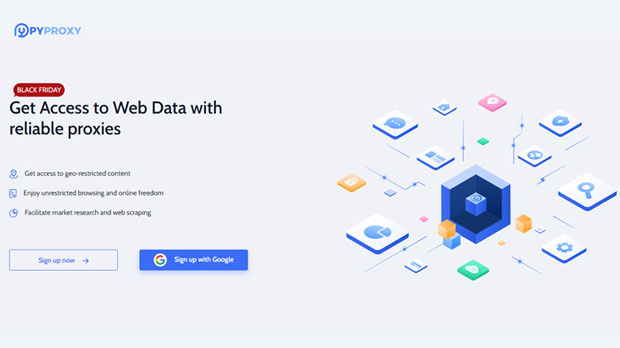When it comes to cross-border internet access, two common proxy technologies, PYPROXY and plain proxies, have garnered significant attention. While both tools aim to help users access content that may otherwise be blocked or restricted in certain regions, their performance can differ depending on the specific use case and requirements. PyProxy, which typically offers a higher level of customization and advanced features, is known for its ability to bypass strict censorship and geo-restrictions. In contrast, plain proxies are simpler in design, often providing basic functions but sometimes struggling to overcome more advanced firewalls and geo-blocks. This article will delve into the performance differences of these two proxy types when it comes to cross-border access, examining the key factors such as speed, security, reliability, and ease of use. What Are PyProxy and Plain Proxies?Before diving into a deeper analysis, it's important to understand what PyProxy and plain proxies are and how they function in the context of cross-border internet access.PyProxy is a specialized proxy that is built with the Python programming language. It offers a more robust and flexible approach to bypassing restrictions, typically integrating features like dynamic IP rotation, encryption, and advanced routing algorithms. This makes it an ideal choice for users who require high levels of anonymity or need to access restricted content over long periods.Plain Proxies, on the other hand, are the traditional proxies that typically perform simpler tasks. They act as intermediaries between the user and the destination server, forwarding requests and responses. These proxies are typically much easier to set up but can be limited in terms of customization. They tend to offer basic access without advanced encryption or features.Key Factors Influencing Performance for Cross-Border AccessIn evaluating the performance of PyProxy vs. plain proxies for cross-border access, we need to assess several crucial factors, including speed, security, reliability, and ease of use. Each of these elements has a direct impact on the user experience, especially when attempting to access websites or content from another country.Speed: How Fast Is the Access?Speed is a key performance factor when it comes to proxies. Users expect to have a seamless experience when browsing websites, especially when accessing content from different countries.PyProxy typically provides faster access than plain proxies. This is due to its ability to use multiple algorithms for optimizing the route of data packets. For example, PyProxy can implement IP rotation, reducing the chances of encountering bottlenecks caused by using a single proxy server for extended periods. Moreover, its ability to work with multiple data centers globally means that users can connect to the closest server, enhancing speed and reducing latency.On the other hand, Plain Proxies often struggle with speed. While they can work well for simple web browsing or accessing restricted sites, their speed can decrease significantly when users attempt to connect to far-away servers. Furthermore, if the proxy is overloaded or using a less optimized server network, it can lead to slow page loading times or even connection drops.Security: Is Your Data Protected?When accessing content across borders, security is a paramount concern, especially if users are transmitting sensitive or personal data. In this respect, there are noticeable differences between PyProxy and plain proxies.PyProxy offers higher security than plain proxies. This is primarily because PyProxy allows for advanced encryption techniques, making it more difficult for hackers or government entities to intercept or trace user data. Additionally, PyProxy can easily integrate with tools like VPNs and Tor, providing a multi-layered approach to privacy. It’s the preferred choice for users who prioritize anonymity and data protection, especially when bypassing government censorship.Plain Proxies, by contrast, generally offer minimal to no encryption. As such, they provide a lower level of security, leaving users vulnerable to data breaches and surveillance. While they can still provide a basic level of anonymity by masking the user's IP address, they are not equipped to handle sophisticated security threats.Reliability: Can You Trust the Proxy for Consistent Access?Reliability is another important factor, as users need to trust their proxy to work consistently across different regions and over time.PyProxy shines in this area due to its robust infrastructure and ability to adapt to changing network conditions. With features like automatic IP rotation, load balancing, and failover systems, PyProxy ensures that users can maintain access to restricted websites even in challenging conditions. Additionally, since PyProxy is more customizable, users can select the optimal settings for their specific needs, such as selecting proxies from specific countries to avoid regional access issues.In contrast, Plain Proxies can sometimes be unreliable. They may suffer from server overloads, especially when too many users are accessing the proxy at once. This can result in slow speeds, connection failures, or even complete shutdowns of the proxy server. Since plain proxies are simpler in design, they are not built to handle large-scale, high-demand environments, which can affect their reliability over time.Ease of Use: How User-Friendly Are the Proxies?User experience is critical, particularly for individuals who are not tech-savvy. Proxies that are easy to configure and operate tend to be more popular.Plain Proxies are generally easier to set up and use. With minimal configuration requirements, users can start using a plain proxy almost immediately. This makes it a good option for individuals who need a quick solution for basic cross-border access.On the other hand, PyProxy may require more technical knowledge to set up and use effectively. While it offers greater flexibility and customization, the complexity of its features might overwhelm less experienced users. However, for those who are familiar with Python and proxy configurations, PyProxy provides a powerful tool for more advanced use cases.Conclusion: Which Proxy is Best for Cross-Border Access?When it comes to cross-border access, both PyProxy and plain proxies have their advantages and drawbacks, and the best choice depends on the user's specific needs.If you require a proxy for high-speed performance, advanced security, and reliability, PyProxy is the better choice. Its advanced features and flexibility make it ideal for those looking to access content across borders with a high level of anonymity and data protection.On the other hand, if you need a simple, easy-to-use proxy for occasional browsing or light access to restricted content, a plain proxy might suffice. While it may lack advanced features and can be less secure, it offers a straightforward solution for users who don’t require extensive customization.Ultimately, the choice between PyProxy and plain proxies comes down to your specific needs regarding speed, security, reliability, and ease of use. For more demanding users, PyProxy is the more comprehensive solution, while for basic, occasional needs, plain proxies are often adequate.
Aug 25, 2025


































































